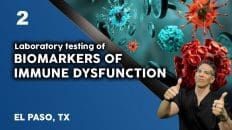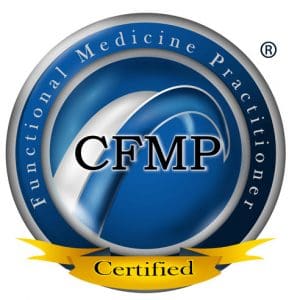Melatonin works as a link between circadian rhythms of different target tissues distributed on our body. The pineal gland primarily secretes melatonin, but other tissues can synthesize this hormone, while the light and darkness cycle modulates its secretion. Melatonin had a close relationship with sleep cycles and mood, but new clinical applications are now known. This hormone and its derivatives have a potent detoxifying effect, portray antioxidant properties, and play an inflammatory modulation role in multiple mechanisms.
Modulation of Inflammatory Mechanisms
Melatonin has multi-tasking properties that confer different regulatory actions. Indeed, this hormone binds to G-protein coupled melatonin receptors located on the plasma membrane, MT1/MT2. In turn, this binding mechanism
Melatonin works as a link between circadian rhythms of different target tissues distributed on our body. The pineal gland primarily secretes melatonin, but other tissues can synthesize this hormone, while the light and darkness cycle modulates its secretion. Melatonin had a close relationship with sleep cycles and mood, but new clinical applications are now known. This hormone and its derivatives have a potent detoxifying effect, portray antioxidant properties, and play an inflammatory modulation role in multiple mechanisms.
Table of Contents
Modulation of Inflammatory Mechanisms
Melatonin has multi-tasking properties that confer different regulatory actions. Indeed, this hormone binds to G-protein coupled melatonin receptors located on the plasma membrane, MT1/MT2. In turn, this binding mechanism activates molecular signaling pathways. Besides, the nuclear receptor family seems to have a high affinity for melatonin.Â
These high-affinity binding sites seem to play a vital role in melatonin’s antiproliferative activities on cancer cells and immunomodulation. On the other hand, melatonin’s receptor-independent signaling accounts for the radical scavenging of reactive oxygen species (ROS).
Melatonin seems to exert a blocking effect on NF-kB pathways, resulting in many different actions, either cytoprotective anti-inflammatory effects or inflammatory mechanisms.
Cytoprotective effects mediated by melatonin:
- Modulation of NF-kB nuclear transcription.
- Regulation effects of toll-like receptors.
- Promotes the mediation of inflammatory enzymes such as COX & LOX, reducing AA.
- Upregulation of nuclear erythroid 2-related factor 2 (Nrf2), resulting in the promotion of antioxidant mechanisms.
- Melatonin boosts glutathione activity.
NF-kB, melatonin, and arthritis:
The transcription factor, NF-kB, is dormant in the cellular cytoplasm but can activate in response to different inducers like bacterial LPS, ROS, and several cytokines. Nevertheless, in an arthritis context, the present macrophages can synthesize melatonin triggered by the NF-kB activation.
However, this mechanism can be present in the regulatory phase and chronic inflammation processes. This mechanism is possible by the same mediator induces antibodies in this autoimmune response, cReL. Therefore, it is vital to assess melatonin’s mechanism of action in rheumatoid arthritis. Studies suggest the following associations in regards to melatonin and RA:
- The findings of a 1990 study associate constant darkness and a melatonin pattern disruption with promoting autoimmunity to type II collagen, leading to collagen-induced arthritis (CIA) in DBA/1 mice. Furthermore, a pinealectomy results in the reversal of such complications.
- The invention of daily melatonin injections to these mice results in increased cell priming levels. In turn, this results in CIA development.
- Elevated melatonin levels are associated with the secretion of pro-inflammatory cytokines, IL-6 and IL-b, in serum levels and joints of RA rats.
- In rats, melatonin’s antioxidative action reflected lower nitrite/nitrate and lipid peroxidation levels in serum but not in joints.
Phase Angle and Juvenile Idiopathic Arthritis.
The nutritional status of patients suffering from RA is critical. However, the body composition section of the nutritional assessment must be adapted to these patients’ needs since pain present and movement are compromised. Recently, a study on juvenile patients with idiopathic arthritis (JIA) found a correlation between phase angle, nutritional status, and JIA. Indeed, this correlation provides a deeper insight into the uses of bioelectrical impedance and phase angle.
Melatonin and osteoarthritis (OA):
While RA’s inflammatory mechanisms are associated with the light-dark cycle and melatonin, in OA, melatonin has therapeutic potential. The cytoprotective effects that melatonin exerts to inhibit hydrogen peroxide (H2O2)-stimulated cytotoxicity results in improved sirtuin 1 (Sirt1)
pathway mediation.
Sirt1 is an NAD+-dependent protein enzyme that influences the circadian rhythm in peripheral tissues. Following this pathway, melatonin can inhibit iNOs and COX while blocking the TNF-a, IL-1b, and IL-8 release.Â
Melatonin and its effects on H2O2 result in the phosphorylation inhibition of PI3K/Akt, p38, ERK, JNK, MAPK, and activation of NF-κB. Also, the intervention with melatonin in an OA rabbit model resulted in reduced cartilage destruction. In mesenchymal stem cells, melatonin exerted scavenging activities, reducing the ROS and inducing chondrogenesis mediated by MSC. Besides this, SOD activity levels were preserved presumably due to melatonin’s action.
Is better sleep going to fix our melatonin supply?
We are going through tough times, therefore the correct information on how to manage our sleep hygiene is vital for us to manage our sleep time.
The multi-tasking hormone melatonin is a critical player in inflammatory processes and a potent antioxidant that blocks inflammatory cascades. Indeed, this information sheds light on the relevance of keeping a sleeping routine, exposure to the sun, and potential complication of nocturnal shift workers. Also, melatonin can function very differently depending on the setting in which it is present. In RA, it can promote inflammatory responses while acting as a cytoprotective agent in OA.- Ana Paola RodrÃguez Arciniega, MS
References:
Jahanban-Esfahlan, Rana et al. “Melatonin in the regulation of inflammatory pathways in rheumatoid arthritis and osteoarthritis: involvement of circadian clock genes.” British journal of pharmacology vol. 175,16 (2018): 3230-3238. doi:10.1111/bph.13898
WiÄ™ch, PaweÅ‚ et al. “Body composition and phase angle as an indicator of nutritional status in children with juvenile idiopathic arthritis.” Pediatric rheumatology online journal vol. 16,1 82. 27 Dec. 2018, doi:10.1186/s12969-018-0297-y
Additional Online Links & Resources (Available 24/7)Â
Online Appointments or Consultations:Â
bit.ly/Book-Online-AppointmentÂ
Online Physical Injury / Accident Intake Form: bit.ly/Fill-Out-Your-Online-HistoryÂ
Online Functional Medicine Assessment:Â bit.ly/functionmed
Disclaimer
The information herein is not intended to replace a one-on-one relationship with a qualified healthcare professional, licensed physician, and not medical advice. We encourage you to make your own health care decisions based on your research and partnership with a qualified health care professional. Our information scope is limited to chiropractic, musculoskeletal, physical medicines, wellness, sensitive health issues, functional medicine articles, topics, and discussions. We provide and present clinical collaboration with specialists from a wide array of disciplines. Each specialist is governed by their professional scope of practice and their jurisdiction of licensure.
We use functional health & wellness protocols to treat and support care for the musculoskeletal system’s injuries or disorders. Our videos, posts, topics, subjects, and insights cover clinical matters, issues, and issues that relate to and support, directly or indirectly, our clinical scope of practice.* Our office has made a reasonable attempt to provide supportive citations and has identified the relevant research study or studies supporting our posts. We provide copies of supporting research studies available to regulatory boards and the public upon request. We understand that we cover matters that require an additional explanation of how it may assist in a particular care plan or treatment protocol; therefore, to further discuss the subject matter above, please feel free to ask Dr. Alex Jimenez or contact us at 915-850-0900.  Read More.
Dr. Alex Jimenez DC, MSACP, CCST, IFMCP*, CIFM*, CTG*
email:Â coach@elpasofunctionalmedicine.com
 phone: 915-850-0900
 Licensed in Texas & New Mexico
General Disclaimer
Professional Scope of Practice *
The information herein on "Melatonin: Inflammatory Modulation" is not intended to replace a one-on-one relationship with a qualified health care professional or licensed physician and is not medical advice. We encourage you to make healthcare decisions based on your research and partnership with a qualified healthcare professional.
Blog Information & Scope Discussions
Welcome to El Paso's Premier Wellness and Injury Care Clinic wellness blog, where Dr. Alex Jimenez, DC, FNP-C, a board-certified Family Practice Nurse Practitioner (FNP-C) and Chiropractor (DC), presents insights on how our team is dedicated to holistic healing and personalized care. Our practice aligns with evidence-based treatment protocols inspired by integrative medicine principles, similar to those found on dralexjimenez.com, focusing on restoring health naturally for patients of all ages.
Welcome to El Paso's Premier Wellness and Injury Care Clinic & wellness blog, where Dr. Alex Jimenez, DC, FNP-C, a board-certified Family Practice Nurse Practitioner (FNP-C) and Chiropractor (DC), presents insights on how our team is dedicated to holistic healing and personalized care. Our practice aligns with evidence-based treatment protocols inspired by integrative medicine principles, similar to those found on dralexjimenez.com, focusing on restoring health naturally for patients of all ages.
Our areas of chiropractic practice include Wellness & Nutrition, Chronic Pain, Personal Injury, Auto Accident Care, Work Injuries, Back Injury, Low Back Pain, Neck Pain, Migraine Headaches, Sports Injuries, Severe Sciatica, Scoliosis, Complex Herniated Discs, Fibromyalgia, Chronic Pain, Complex Injuries, Stress Management, Functional Medicine Treatments, and in-scope care protocols.
Our information scope is limited to chiropractic, musculoskeletal, physical medicine, wellness, contributing etiological viscerosomatic disturbances within clinical presentations, associated somato-visceral reflex clinical dynamics, subluxation complexes, sensitive health issues, and functional medicine articles, topics, and discussions.
We provide and present clinical collaboration with specialists from various disciplines. Each specialist is governed by their professional scope of practice and their jurisdiction of licensure. We use functional health & wellness protocols to treat and support care for the injuries or disorders of the musculoskeletal system.
Our videos, posts, topics, subjects, and insights cover clinical matters, issues, and topics that relate to and directly or indirectly support our clinical scope of practice.*
Our office has reasonably attempted to provide supportive citations and has identified the relevant research studies or studies supporting our posts. We provide copies of supporting research studies available to regulatory boards and the public upon request.
We understand that we cover matters that require an additional explanation of how they may assist in a particular care plan or treatment protocol; therefore, to discuss the subject matter above further, please feel free to ask Dr. Alex Jimenez, DC, APRN, FNP-BC, or contact us at 915-850-0900.
We are here to help you and your family.
Blessings
Dr. Alex Jimenez DC, MSACP, APRN, FNP-BC*, CCST, IFMCP, CFMP, ATN
email: coach@elpasofunctionalmedicine.com
Licensed as a Doctor of Chiropractic (DC) in Texas & New Mexico*
Texas DC License # TX5807
New Mexico DC License # NM-DC2182
Licensed as a Registered Nurse (RN*) in Texas & Multistate
Texas RN License # 1191402
ANCC FNP-BC: Board Certified Nurse Practitioner*
Compact Status: Multi-State License: Authorized to Practice in 40 States*
Graduate with Honors: ICHS: MSN-FNP (Family Nurse Practitioner Program)
Degree Granted. Master's in Family Practice MSN Diploma (Cum Laude)
Dr. Alex Jimenez, DC, APRN, FNP-BC*, CFMP, IFMCP, ATN, CCST
My Digital Business Card




















